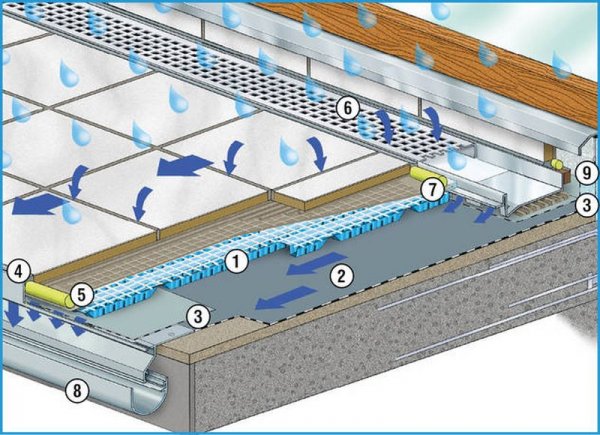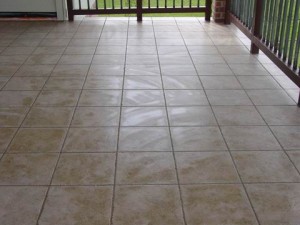In the suburban area, great importance is attached to the house itself and the landscape surrounding it, and the terrace is exactly the architectural element that can unite them. The selected terrace tiles or other cover largely determines the aesthetic appeal of the entire ensemble and the safety of its inhabitants. When choosing a material for the floor of summer rooms, its strength, frost resistance and anti-slip qualities are of the greatest importance.
Basic requirements for floor tiles for terraces
The most practical and popular material for these purposes is various tiles, when choosing which for the street, and not the interior, special attention should be paid to the following characteristics:
1) The level of roughness determines the anti-slip properties of the coating and, accordingly, its safety. This indicator is indicated on products marked R9 – R13 – the larger the number, the safer the floor of the terrace.
2) Strength determines the degree of abrasion of the material during operation. For a veranda or terrace, this characteristic must be at least PEI IV-V. A high resistance to scratches is indicated by an indicator on the Mohs scale of 5-6.
3) Frost resistance affects the durability of the material used outdoors. This characteristic is determined by the level of moisture resistance of products – the less it is, the higher the indicator. High-quality frost-resistant terrace tiles have a maximum water absorption of 3%.
Aesthetic characteristics depend solely on the preferences of the owners and the opinion of the designer. A variety of textures, colors and patterns allows you to choose almost any option – plain tiles, wood, patterned, pebble, mosaic and so on.
Modern materials for covering terraces
Currently, the construction market offers a wide range of tiles for decoration of summer premises:
- Ceramic tiles for the terrace and the house can be the same, which allows you to create the integrity of the space in the interior. The advantages of this option are aesthetic appeal and ease of care, and the disadvantage is quick heating in hot weather.
- Terracotta – painted and glazed clay tiles. It is a very durable and frost-resistant material. For terraces, it is recommended to choose it with a rough surface and a matte glaze coating.
Porcelain tile (gres) is a rough and solid material with high frost resistance (higher than terracotta), resistance to chemicals, pollution and abrasion. - Clinker has high frost resistance, due to water absorption of only 0.5-0.7%. It is solid, resistant to high temperatures and abrasion. It usually has a red or brown tint, but glazing increases its palette.
- Natural stone fits perfectly into any landscape and has high durability. But depending on the breed, it differs greatly in terms of strength, abrasion and water absorption. For facing terraces in the country, tiles of granite, syenite and basalt are preferable. Sedimentary rocks are the weakest and require special care – these are dense limestone, alabaster, sandstone, travertine.
Marble requires impregnation, as it is susceptible to weathering, so it is used on covered terraces. This stone can be of various colors – white, yellow, green, blue, black, and the impregnation makes its shade more saturated. - Koping stone consists of crushed granite and fine-grained concrete, which gives it aesthetic appeal, and its surface makes it pleasant to the touch and not slippery. This material is poorly susceptible to changes in humidity and temperature, and also has a relatively low price.
Highlights of laying the material on the terrace
Laying tiles on the terrace requires the use of special adhesives, which are characterized by maximum elasticity. It is extremely important that there are no voids under the laid tile, as they adversely affect the adhesion of the material to the substrate and its strength. Be sure to perform a slope of the floor from the wall at least 12%.
It is necessary to monitor the width of the joints between the tiles, which should be at least 2% of the length of their faces. The joints are filled with grout for outdoor use. If expansion joints are present, they are filled with polyurethane sealant. Expansion and temperature joints are especially needed on the southern terraces to prevent deformation of the coating after heating. For places of abutment of the cladding to the base, an elastic mass is used.

General conclusions about choosing tiles for summer rooms
The best types of tiles for the summer terrace are porcelain tiles, including those with a matte glaze layer or structural surface, as well as clinker matte tiles. Unsuitable materials for floors – polished and glazed products, which are too slippery, and mosaics with too many seams, which accelerates the destruction of the lining.
